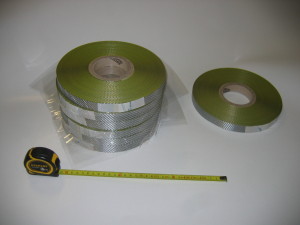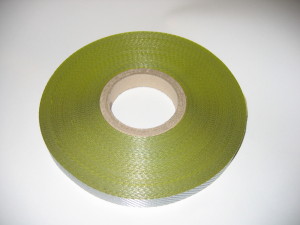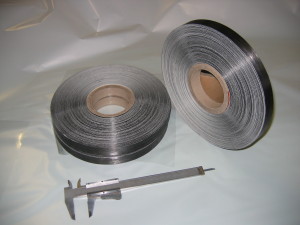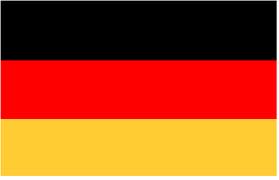Prepreg Slicing
Prepreg Slicing?
“What is this thing?”
Well, this page is actually extremely technical, and probably will be visited and understood by a small number of experts. In our view, however, one of the great opportunities of the web is to give everyone the chance to enter even the most difficult subjects, without any fear, and if the content is not written in an overly abstruse, anyway to understand something. For this reason, first of all some basic notions will be explained (that skilled persons know for sure).
Pre Pregs
Prepregs are one of the most important semi-finished products which are used in the production of composites.
All composite materials are made of two components :
- one or more layers of fibers (glass , carbon , Kevlar and others) that are arranged with a precise orientation and give the structural characteristics of the finished item;
- and a thermosetting resin (epoxy , polyester , phenolic and others), which provides to hold together, in the desired position, the various fibers.
In the beginning the resin is in a liquid or viscose status and can be spread on the fibers. By subjecting the two components (fiber and resin) to a special heat cycle (called polymerization if you are technical and sophisticated, cooking if you are quick) the permanent hardening of the resin is obtained and the item in composite material is made.
Many ways to put together fibers and the thermosetting resin are possible. For example one can start from a continuous filament that is wrapped on the mold and simultaneously impregnated with resin (the process is called filament winding). Or a dry tissue is taken, placed on the mold, and the thermosetting resin required applied (with various systems, for example with a paintbrush in the hand lay up process) .
Prepreg is the solution that foresees the use of a semi-finished product, consisting of one or many layer of properly oriented fibers (unidirectional, fabric, multiaxial and others), which is appropriately impregnated with the right amount of thermosetting resin in a special machine (the impregnating machine).
With other systems (for example in filament winding) fiber arrangement, impregnation, and polymerization take place in sequence, in a single production cycle, whereas prepregs are usually produced well in advance with respect to the final polymerization. The name derives from the union of two words: “PRE” is to mean that the semifinished product has been “PRE … pared” in advance “PREG” instead refers to the fact that it has been subjected to the process of “im … PREG …nation”.
Prepregs have contributed greatly to improve the overall performance of the composites industry, in particular thanks to two characteristics:
- a much better qualitative constancy of alternative systems. This is particularly reflected in a well defined fiber/resin ratio (with other systems it is often necessary to use a quantity of resin higher than necessary because there is a significant percentage of resin which is lost, dispersed in the manufacturing process), with the consequent possibility of obtaining significant reductions in the final weight of the composite;
- the possibility to arrange the fibers with all the desired axial orientations, even at “zero degree” (which is impossible, for example, in filament winding) with the result of being able to place all the fibers in the composite in the quantities and with the spatial arrangements defined by the project.
We talked of semi-finished product, but in reality things are not in these terms. Very few large composite producers are so large to made internally both the phase of pre-impregnation, and the final stage of production of the composite itself.
Instead the market is divided into two parts: upstream there are the producers of prepregs which employ fibers and resins to obtain the prepreg. Downstream composite manufacturers purchase prepregs to make the finished composite. For these reasons, in the entire production cycle of the composite prepreg is a semi-finished product, it is a real product, bought and sold in the market if the reality is considered.
In the opinion of the writer the industry has benefited greatly from this separation, because it has allowed the specialization of operations, with an overall improvement of the composites industry as a whole.
Pre Pregs Cutting
You must now know that prepregs usually are sold in the form of a roll, consisting of at least two layers: the real prepreg (fiber and resin) and a film (siliconized paper or film) which acts as a support, for protection and as releaser. To give you an idea the typical roll of carbon prepreg is 60 centimetres wide and has a length of 160 linear meters.
Prepregs reels are cut in patches of proper geometry (called “patches” or “ties”), which are then be positioned on the mold with a precise arrangement in order to obtain the finished product. All the manufacturers of composites have a cutting system. The easiest method is the realization of jigs and the cutting by hand, the more sophisticated the use of special cutting plotter, controlled by computer which makes the “nesting” of the material optimizing cuts and reducing at the minimum scrapes.
“And how about PrePreg cut in Small Tapes?”
To cut prepregs in a small tape it’s another story. It is not at all easy to do, and all the experts are well aware of. You cannot take the entire roll and saw it, cut it like a salami, for the simple reason that the blade to penetrate the inner layers must remove a part of the material of the outer layers. The results is that the width of the tape will be smaller on the outer layers of the reel and greater in the inner layers. It is therefore necessary to unwind the prepreg tape, run all the cuts simultaneously on the tape, and rewind all the suitably cut reels at the same time.
Having the prepreg cut into tape gives a further degree of freedom in the design and production of composites. In particular in the production of tubular items the prepreg tape may be wound in a spiral around the mould.
We have started to cut prepregs in 1988, on request of a couple of our composites customers. This process is very complex and requires considerable experience and expertise. You can see some pictures of the results obtained in the pictures on the page.
Even today we carry out this operation in one account work: we don’t buy or sell prepregs, but we just cut what is sent us by manufacturers or prepregs or by the end users (the composite manufacturers).
For more information on prepreg slicing please contact us. Our technical department is at your disposal for explanations or insights, tests, new products and / or applications developments.
For further infomations write, phone, send an email at:
A. Peruzza S.r.l. – via Portelle 1 – 31010 Mareno di Piave – Tv – Italia
Telefono: (int+ 39) 0438 492335. Telefax: (int+ 39) 0438 492365
Email: info@aperuzza.com
© 2016-2022. A.Peruzza S.r.l. is the sole owner and authorized user of the intellectual property rights related to the information herein. It is forbidden to copy, paste into web sites, distribute or in any way publicize this document to third parties without the prior written permission of the owner.





























